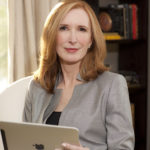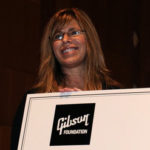 One of the reason’s I love marketing is that no two challenges look alike and there is always something new to learn. I had the pleasure of talking with Janet Roberts, CMO of Syniverse, a rapidly growing private company that provides roaming and networking services to mobile operators all of the world. Janet has been on a world-wind journey to raise the bar on the marketing metrics her team gathers from around the world and across multiple communication channels. Since I only used one quote in the related FastCompany.com article, here’s a lot more of what I learned in our conversation.
One of the reason’s I love marketing is that no two challenges look alike and there is always something new to learn. I had the pleasure of talking with Janet Roberts, CMO of Syniverse, a rapidly growing private company that provides roaming and networking services to mobile operators all of the world. Janet has been on a world-wind journey to raise the bar on the marketing metrics her team gathers from around the world and across multiple communication channels. Since I only used one quote in the related FastCompany.com article, here’s a lot more of what I learned in our conversation.
DN: Can you give me a quick overview of Syniverse…
Syniverse is a quiet brand because we work behind the scenes in the mobile ecosystem. The company began as a very small department within GTE 25 years ago, and bridging the space between mobile operators is in our DNA. We’ve transitioned from serving mainly North American operators with mobile roaming capabilities to providing sophisticated interoperability and intelligence solutions to mobile service providers around the globe.
DN: So how is business?
In the past five years, we’ve grown our customer base from 330 mobile operators to more than 900 mobile service providers including operators, cable providers, ISPs and enterprises. During the same period, we’ve more than doubled our revenues.
DN: Tell me about your customers…
A significant portion of our customer base continues to be mobile operators in all regions of the world. However, the mobile ecosystem is an interesting place that is constantly changing and expanding. Cable operators, internet service providers, enterprises and big brands are part of the mix now, and we serve each of these segments.
DN: Right, so it’s all B2B, and I imagine it’s a long sales cycle.
It is B2B. As for the sales cycle, it’s a very high-touch interaction where we employ a consultative selling approach, so the average sale takes a few months. It’s not the type of sale made by a customer placing an order directly on a website.
DN: So how does this consultative selling work?
We work very closely in partnership with our customers and prospects to understand their business issues and proactively offer solutions to help them grow revenue, protect their brands and manage their businesses efficiently.
DN: Can you give me an overview of your marketing activities and associated metrics?
Let’s start with our website. In 2011, we completed a major refresh where we improved the navigation and added functionality to better serve additional segments. We also added much more video to illustrate use cases and our consultative approach.
Regarding metrics, we look at overall impressions, time spent on various Web pages and the pattern by which visitors navigate the website. One of our team members is dedicated to analyzing Web activity and search engine optimization programs to measure marketing effectiveness.
DN: So what other kind of data are you gathering?
We gather data to help us measure the effectiveness of our events, PR and media outreach, customer publications, and internal communications. We employ surveys to gather quantitative and qualitative feedback, measuring progress year over year or quarter over quarter. We conduct customer satisfaction surveys, which are a bit broader and help us see how we’re trending with respect to corporate performance metrics.
DN: Some say that if you can’t measure it, you should not do it. What do you think?
We try to find a way to assess all of our programs, so we can prioritize for the highest impact. Personally, I think you can always find ways to measure effectiveness, even if they are not obvious at first.
DN: Do you also have metrics to internal communications?
We conduct an employee satisfaction survey annually and include questions that specifically address our communication effectiveness. We’re always introducing new internal outreach programs and regularly survey our internal audience to assess usefulness and gather ideas to further add value.
DN: What are the metrics that matter to you the most?
Because our website is the centerpiece of our communications, it is very important that we understand our trending online. Web usage data tells us a lot – not only the sheer numbers of visitors but also their usage patterns. We can then identify what is resonating with our audiences and determine where we should add content.
DN: What about harder to measure things like PR exposure?
That’s a good question. Of course we look at impressions, media mentions, numbers of speaking engagements and more. Some results can’t be quantified in the usual way but are important to our business. For example, I recently learned from two product group colleagues that visibility of the company’s capabilities gained from an interview I did for a business publication directly led to a partnership opportunity for that group.
DN: Where are you in on what a fellow CMO calls the metrics journey?
Though we have a lot of tools and measures in place, we are still in the boarding process of this journey. We would like to get a look at our trending in near real-time so that we can increase effectiveness and better serve our customers with the information they need.
DN: Do you have a metrics dashboard?
We’re in the process, as we speak, of evaluating how we’re going to report our marketing effectiveness dashboard on a consolidated basis. We have a lot of good data that we consider on a micro dashboard level, and we recognize the need to roll it up into a blended dashboard to be indicative of where we are.
DN: So is this a dynamic challenge or what?
Yes. Since we need to address existing customers plus an expanding market that includes emerging members of the mobile ecosystem on a global basis, we need to figure out what makes the most sense to reach all our audiences. There are a myriad of channels – traditional and emerging as well – so it is important to understand and measure effectiveness. Between new segments and new marketing channels, it makes for a job that is always interesting, especially when you couple that with being in an industry like mobile, which is changing all the time. Even with very good success, you can’t ever sit back and rely on a formula. You never know when the next game changer will be introduced, so you must be one step ahead.


